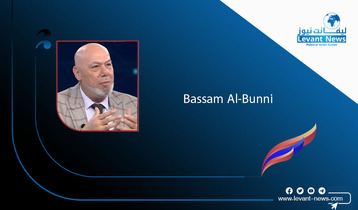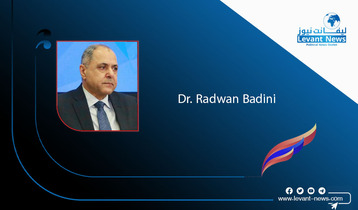-
Resuming the American Quest to Close the Gulf Rift

The volcanic consequences of the COVID-19 pandemic is reshaping world affairs on various levels. Whether the current shifts in international relations are temporary or permanent is a question that only time and practice could answer. One dynamic of a shifting relationship to observe, during this global tragedy, is the relationship between the United States and Arab Gulf countries. It may not only redefine United States’ foreign policy toward the Middle East, but it could also decide for the economic future of the entire globe.
On April 23rd, the American President Trump had a phone call with H.H. Sheikh Mohamed Bin Zayed, the Crown Prince, and the de facto leader, of the United Arab Emirates. Among other issues discussed on the phone call, Trump urged Bin Zayed to “take steps toward resolving the Gulf rift in order to work together to defeat the Coronavirus, minimize its economic impact, and focus on critical regional issues.” One day before that, on April 22nd, President Trump had a separate phone call with Sheikh Tamim bin Hamad Al-Thani, the Emir of Qatar. According to the White House spokesperson, the President encouraged the Emir to take steps to resolve his country's ongoing dispute with neighboring Gulf countries.
The “Gulf rift” or “neighbor disputes,” mentioned in the two phone calls, refers to the diplomatic and economic boycott applied against Qatar by the Arab quartet – namely; Saudi Arabia, United Arab Emirates, Bahrain, and Egypt. The boycott is meant to pressure Qatar to stop supporting Islamic terrorist organizations, that has been wreaking havoc, all over the Middle East, and targeting the stability and security of Gulf monarchies, for decades. The boycott was announced at the conclusion of the “Arab Islamic American Summit” in Saudi Arabia, in 2017, which was held a few months after Trump was seated as US President. At that time, President Trump took the side of the Arab quartet against Qatar and blessed the blockade, despite the resound objection from his Department of State.
Over years, Trump’s policy to tacitly endorse the Gulf rift and take sides served his goal to revive the American economy. On the margin of the Arab Islamic American Summit in May 2017, US President Trump and Saudi Arabia's King Salman bin Abdulaziz signed a series of letters of intent for the Kingdom of Saudi Arabia to purchase arms from the United States totaling $110 billion immediately, and $350 billion over 10 years. In addition, the investments pumped by Saudi Arabia into the American economy has risen steeply, since then. According to Treasury Department reports, Saudi Arabia increased its ownership of US Treasuries by 83%; i.e. from $97 billion in 2016 to $177 billion in 2019.
The two phone calls paid by the American President to UAE and Qatar leaders took place only one day after the shocking historic drop in Texas oil prices, on April 20th, that went as low as ($-40) per barrel. The fall in demand versus surge in supply of oil products as a result of the lockdown, aimed to control the spread of Coronavirus, is one reason for this drop. Another reason is that the United States still need Middle Eastern oil; not only because of its quality specifications versus Texas oil, but also because its availability in the US market acts as a shock absorbent to market ebbs and flows.
Unlike West Texas Index (WTI) prices, the Brent prices seems stronger in face of political and economic crises. It has not been affected much with the recent “oil price war” between OPEC+ and Russia, which ended with a historic deal to reduce production by 10 million barrels, to survive the economic implications of the pandemic. The United States could not be part of this crucial deal because of complicated US laws and regulations that provides a limited authority to the President to decide such matters.
In January, after Iran threatened to target oil fields of Arab Gulf countries, to disturb US economy, President Trump said in a public speech: “Over the last three years, under my leadership, our economy is stronger than ever before, and America has achieved energy independence… We are independent, and we do not need Middle East oil.” Yet, data proves that President Trump’s claims are not true. According to “US Energy Information Administration,” the United States imported 9.10 million barrels per day of petroleum from 90 countries, in 2019. Total of 18% of these imports came from OPEC+, led by Saudi Arabia, while 11% of these imports came from Arab Gulf countries.
Therefore, the Trump administration has realized that the policy of blessing, or at least ignoring the “Gulf rift,” or taking sides with one Gulf country against the other is not beneficial for the US economy, on the long run. In fact, it may be a dangerous policy, should Gulf countries, at some point, decide to counter-play the cards of oil prices or financial investments to force certain stances or decisions from the US administration. That is particularly possible in light of the many predicaments pressuring the American economy, since the eruption of the COVID-19 pandemic.
Now, the reconciliation of Arab Gulf countries and the return of a strong Gulf Cooperation Council have become in the best interest for the United States, economically and politically. We expect to see sincere endeavors by the Trump administration to resolve the disputes in the Gulf, in the next months. Yet, it is Arab Gulf countries’ final call to accept Qatar back, despite its continuing support to terrorism and working against the wellbeing of its neighbors.

by :Dalia Ziada
You May Also Like
Popular Posts
Caricature
BENEFIT AGM approves 10%...
- March 27, 2025
BENEFIT, the Kingdom’s innovator and leading company in Fintech and electronic financial transactions service, held its Annual General Meeting (AGM) at the company’s headquarters in the Seef District.
During the meeting, shareholders approved all items listed on the agenda, including the ratification of the minutes of the previous AGM held on 26 March 2024. The session reviewed and approved the Board’s Annual Report on the company’s activities and financial performance for the fiscal year ended 31 December 2024, and the shareholders expressed their satisfaction with the company’s operational and financial results during the reporting period.
The meeting also reviewed the Independent External Auditor’s Report on the company’s consolidated financial statements for the year ended 31 December 2024. Subsequently, the shareholders approved the audited financial statements for the fiscal year. Based on the Board’s recommendation, the shareholders approved the distribution of a cash dividend equivalent to 10% of the paid-up share capital.
Furthermore, the shareholders endorsed the allocation of a total amount of BD 172,500 as remuneration to the members of the Board for the year ended 31 December 2024, subject to prior clearance by related authorities.
The extension of the current composition of the Board was approved, which includes ten members and one CBB observer, for a further six-month term, expiring in September 2025, pending no objection from the CBB.
The meeting reviewed and approved the Corporate Governance Report for 2024, which affirmed the company’s full compliance with the corporate governance directives issued by the CBB and other applicable regulatory frameworks. The AGM absolved the Board Members of liability for any of their actions during the year ending on 31st December 2024, in accordance with the Commercial Companies Law.
In alignment with regulatory requirements, the session approved the reappointment of Ernst & Young (EY) as the company’s External Auditors for the fiscal year 2025, covering both the parent company and its subsidiaries—Sinnad and Bahrain FinTech Bay. The Board was authorised to determine the external auditors’ professional fees, subject to approval from the CBB, and the meeting concluded with a discussion of any additional issues as per Article (207) of the Commercial Companies Law.
Speaking on the company’s performance, Mr. Mohamed Al Bastaki, Chairman BENEFIT , stated: “In terms of the financial results for 2024, I am pleased to say that the year gone by has also been proved to be a success in delivering tangible results. Growth rate for 2024 was 19 per cent. Revenue for the year was BD 17 M (US$ 45.3 Million) and net profit was 2 Million ($ 5.3 Million).
Mr. Al Bastaki also announced that the Board had formally adopted a new three-year strategic roadmap to commence in 2025. The strategy encompasses a phased international expansion, optimisation of internal operations, enhanced revenue diversification, long-term sustainability initiatives, and the advancement of innovation and digital transformation initiatives across all service lines.
“I extend my sincere appreciation to the CBB for its continued support of BENEFIT and its pivotal role in fostering a stable and progressive regulatory environment for the Kingdom’s banking and financial sector—an environment that has significantly reinforced Bahrain’s standing as a leading financial hub in the region,” said Mr. Al Bastaki. “I would also like to thank our partner banks and valued customers for their trust, and our shareholders for their ongoing encouragement. The achievements of 2024 set a strong precedent, and I am confident they will serve as a foundation for yet another successful and impactful year ahead.”
Chief Executive of BENEFIT; Mr. Abdulwahed AlJanahi commented, “The year 2024 represented another pivotal chapter in BENEFIT ’s evolution. We achieved substantial progress in advancing our digital strategy across multiple sectors, while reinforcing our long-term commitment to the development of Bahrain’s financial services and payments landscape. Throughout the year, we remained firmly aligned with our objective of delivering measurable value to our shareholders, strategic partners, and customers. At the same time, we continued to play an active role in enabling Bahrain’s digital economy by introducing innovative solutions and service enhancements that directly address market needs and future opportunities.”
Mr. AlJanahi affirmed that BENEFIT has successfully developed a robust and well-integrated payment network that connects individuals and businesses across Bahrain, accelerating the adoption of emerging technologies in the banking and financial services sector and reinforcing Bahrain’s position as a growing fintech hub, and added, “Our achievements of the past year reflect a long-term vision to establish a resilient electronic payment infrastructure that supports the Kingdom’s digital economy. Key developments in 2024 included the implementation of central authentication for open banking via BENEFIT Pay”
Mr. AlJanahi concluded by thanking the Board for its strategic direction, the company’s staff for their continued dedication, and the Central Bank of Bahrain, member banks, and shareholders for their valuable partnership and confidence in the company’s long-term vision.
opinion
Report
ads
Newsletter
Subscribe to our mailing list to get the new updates!




















